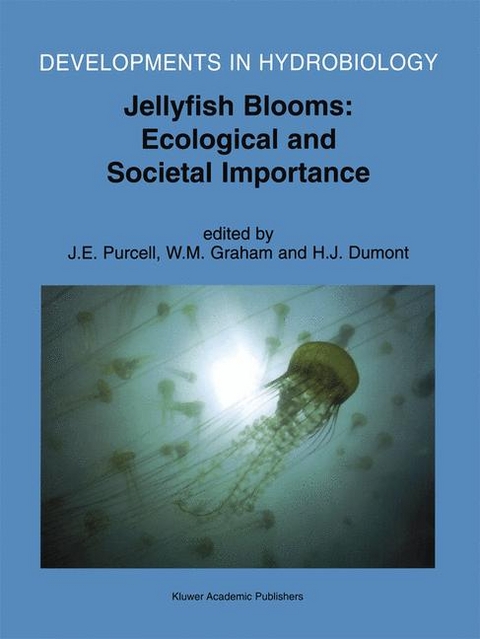
Jellyfish Blooms
Kluwer Academic Publishers (Verlag)
978-0-7923-6964-6 (ISBN)
Jellyfish, a group that includes scyphomedusae, hydromedusae, siphonophores and ctenophores, are important zooplankton predators throughout the world's estuaries and oceans. These beautiful creatures have come to public attention as featured exhibits in aquaria and in news headlines as invaders and as providers of genes used in biomedical research. Nevertheless, jellyfish are generally considered to be nuisances because they interfere with human activities by stinging swimmers, clogging power plant intakes and nets of fishermen and fish farms, and competing with fish and eating fish eggs and larvae. There is concern that environmental changes such as global warming, eutrophication, and over-fishing may result in increased jellyfish populations. The literature reviews and research papers in this volume explore the interactions between jellyfish and humans.
Papers cover: the medical aspects of jellyfish stings; jellyfish as human food and jellyfish fisheries; interactions of jellyfish and fish; effects of environmental changes on jellyfish; effects of introduced ctenophores on the Black Sea ecosystem; factors causing increases or concentrations of jellyfish; and others aspects of jellyfish ecology. This is an important reference for students and professional marine biologists, oceanographers, fishery scientists, and aquarists.
Jellyfish and Human Enterprise: Fisheries and Tourism. Medical aspects; Burnett. Jellyfish as food; Hsieh, et al. Jellyfish fisheries; Omori, Nakano. Interactions with fish; Purcell, Arai. Feeding on salps by anchovies; Mianzan. Jellyfish and Changing Ecosystems. Blooms in response to changing ocean conditions; Mills. Eutrophication; Arai. Polyp survival and development in low DO; Condon, et al. Jellyfish increases in GOM; Graham. Blooms of Mnemiopsis in relation to temperature; Sullivan, et al. The impact of El Nino on mesopelagic hydromedusae; Raskoff. Jellyfish swarms (Mastigias) and El Nino; Dawson, et al. Comparison of Mnemiopsis in native and non-native habitats; Purcell, et al. Chemical composition, respiration and feeding of Beroe in Black Sea; Finenko, et al. Beroe in Black Sea; Shiganova, et al. Physical/Hydrodynamic Interactions with Jellyfish. Interactions with physical features -- solicited review; Pages, et al. Modeling relative to circulation; Johnson, Perry. Flow and prey capture by Phyllorhiza punctata; D'Ambra, et al. Jellyfish Reproduction and Population Biology. Reproduction and life history strategies of Aurelia -- solicited review; Lucas. Ephyrae production of Aurelia; Watanabe, Ishii. Molecular phylogenetics of Aurelia; Dawson, Martin. General Ecology of Jellyfish. Chrysaora and Aequorea in Benguela; Sparks, Gibbons. Ciliary structures in food groves of Mnemiopsis; Moss, et al. Protistan epibionts of Mnemiopsis; Moss, et al. Parasites; Martorelli. Food and impact of Aurelia on zooplankton; Ishii, Tanaka. Periphylla; Youngbluth, Bamstedt.
| Erscheint lt. Verlag | 31.10.2001 |
|---|---|
| Reihe/Serie | Developments in Hydrobiology ; v. 155 |
| Zusatzinfo | Illustrations (some col.), maps |
| Sprache | englisch |
| Einbandart | gebunden |
| Themenwelt | Naturwissenschaften ► Biologie ► Limnologie / Meeresbiologie |
| Naturwissenschaften ► Biologie ► Zoologie | |
| ISBN-10 | 0-7923-6964-5 / 0792369645 |
| ISBN-13 | 978-0-7923-6964-6 / 9780792369646 |
| Zustand | Neuware |
| Haben Sie eine Frage zum Produkt? |
aus dem Bereich


